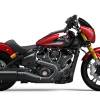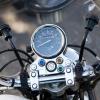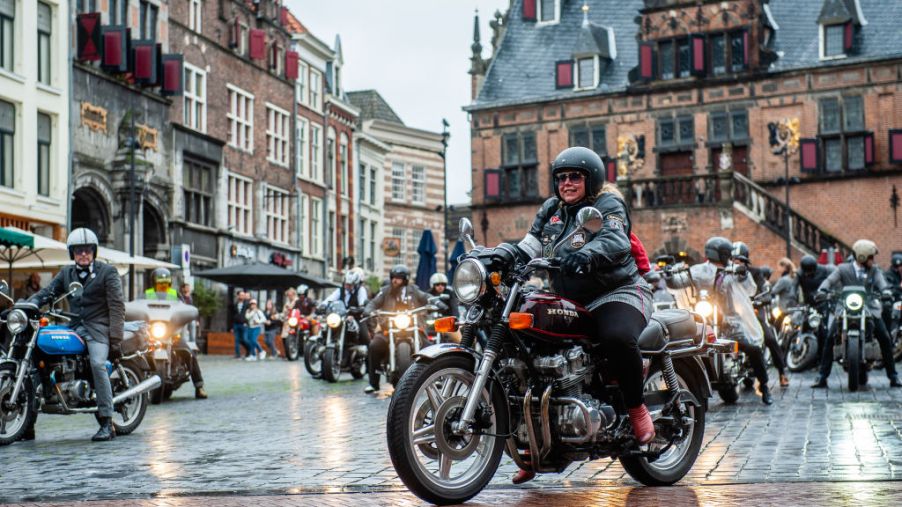
Can You Ride a Classic Motorcycle Daily?
It’s not just classic trucks and SUVs that are gaining popularity. Classic motorcycles are also on the rise, especially café racers, scramblers, and bobbers. And classic bikes like the humble Vespa scooter can sometimes venture far outside their comfort zone. But does that mean you could, or should, use a classic motorcycle as a daily commuter?
Classic motorcycle pros and cons
Many of the benefits and drawbacks of classic motorcycles are the same as any other classic vehicle. These mostly revolve around their age.
Regardless of market value, classic bikes are simply older bikes. That means they come with old technology, such as carburetors and drum brakes. And even if the bikes were ridden regularly, their internal seals and gaskets will still usually need to be replaced. The same goes for electrics and wires. Lastly, these bikes don’t have as many bells and whistles as modern ones do, like ABS, and often not even fuel gauges.
However, as r/motorcycles sub-Reddit and Motorcycle Forum users report, the older tech and simplicity can also be a boon. Instead of hydraulic lines, classic bikes’ brakes are usually mechanical, making them easier to repair in case of failure. The same thing goes for carburetors: although synchronizing them can be tricky, they’re cheaper and simpler to fix than modern fuel injection systems. A lot of older bikes are also air-cooled, which means they don’t have water pumps or radiators.
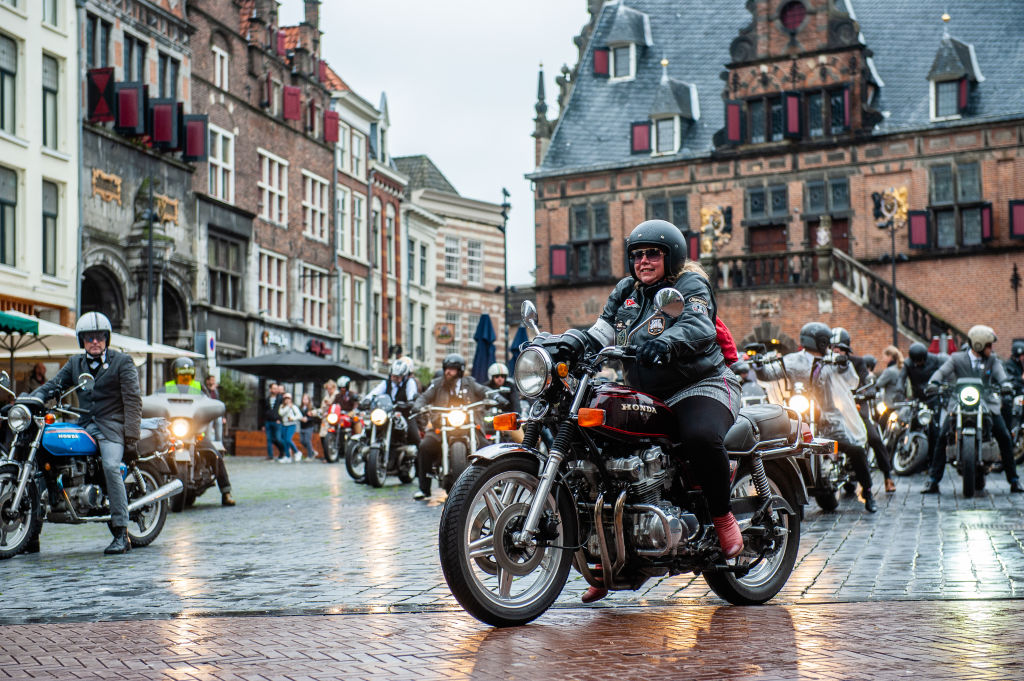
As with the less-complex electrics, fewer parts mean fewer things to go wrong. And if something goes wrong, you can easily repair it on the side of the road. Plus, the lack of tech means classic motorcycles are usually lighter and easier to maneuver than newer bikes.
Classic motorcycle pricing
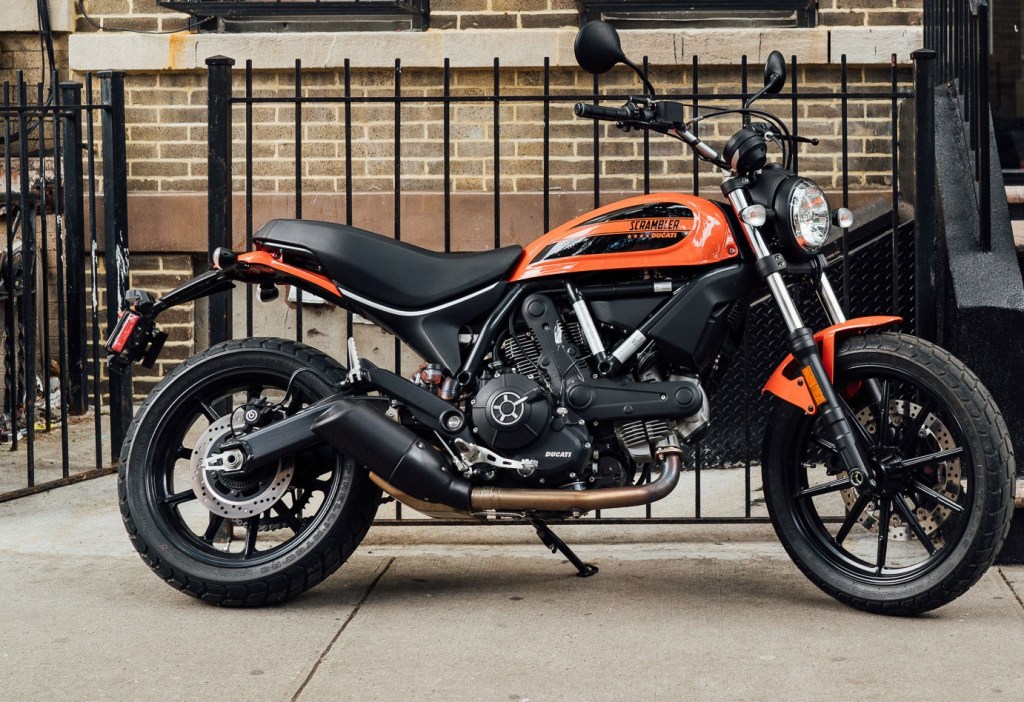
Overall, classic motorcycles are usually cheaper than new ones. Although prominent brands like Ducati and Indian do offer ‘entry-level’ bikes, even the cheapest Ducati Scrambler costs almost $8000.
However, that’s not to say all vintage bikes are inexpensive. Brough-Superiors, for instance, often command six-figure prices. And many small-capacity beginner bikes aren’t that much more expensive than good-condition classic bikes.
But on the basis of engine capacity, a 600cc ‘70s bike is going to be noticeably cheaper than a brand-new one. And the older engine’s lower power makes it better suited for less-experienced riders.
Avoid classic British and Italian bikes
Although it might be tempting to get something stylish like an older British or Italian bike, for daily reliability, it’s best to steer clear.
True, bikes like the Norton Commando and 70s Triumph Bonneville can sometimes sell at low prices, The Drive and Popular Mechanics report. However, veteran motorcycle journalist Peter Egan, who’s owned 4 Commandos, described his relationship with the bikes as “’ love/hope.’” As in, he hoped that with “just the right upgrades to modern materials, electronics, and sealants,” the bikes would run fine. There are safer, more-affordable bets, though.
Honda CB750
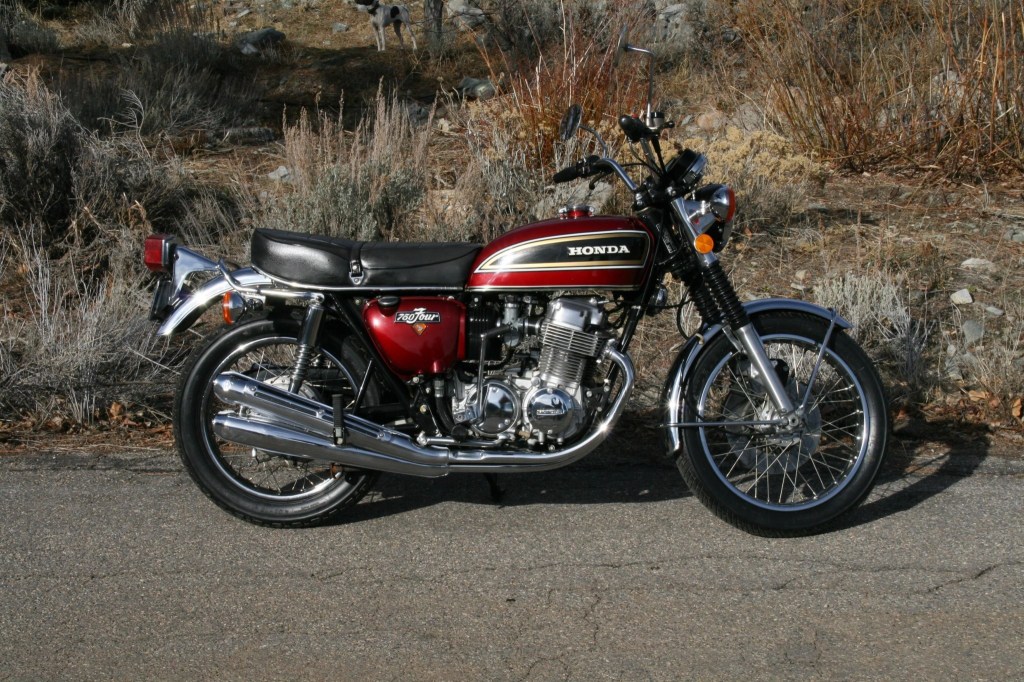
RideApart, The Drive, and Popular Mechanics all recommend Honda CB bikes, especially the CB750 Four. When this bike debuted in 1969, it was quickly dubbed “the world’s first superbike.” Not only did it have a 750cc four-cylinder and 5-speed, but it also had a front disc brake and electric starter. The latter two were something brand-new for production bikes.
Honda later made the CB550 Four and CB350 Four, which featured the same level of technology, only with smaller engines. And, RideApart reports, the CB550 was arguably the better-balanced bike.
The CB750 was produced from 1969-1982. In 1975, Honda replaced the rear drum brake for a disc one, though conversion kits exist for the early models. And in 1979, the engine was revised for additional performance. The earliest CB750s are the most expensive, as they were made with a special production method. But Bring a Trailer reports it’s entirely possible to find a good-condition CB750 or CB550 for $3000-$4000.
Suzuki GS750
The Honda CB750 was the first in a line of Universal Japanese Motorcycles. These were similarly-styled bikes produced by Japanese manufacturers that combined performance with excellent reliability, according to Silodrome. And Suzuki had its own UJM, in the GS Series. And the direct competitor for the Honda CB750 was the 1977-1984 Suzuki GS750.
Although this was Suzuki’s first 4-stroke motorcycle engine, the company did an incredible job. Motorcycle Classics reports the 750cc four-cylinder is very reliable, especially for a 30-year-old bike. As long as the oil is changed and the bike run regularly, it should be pretty much bulletproof. The same goes for the larger-capacity GS850 and GS1000.
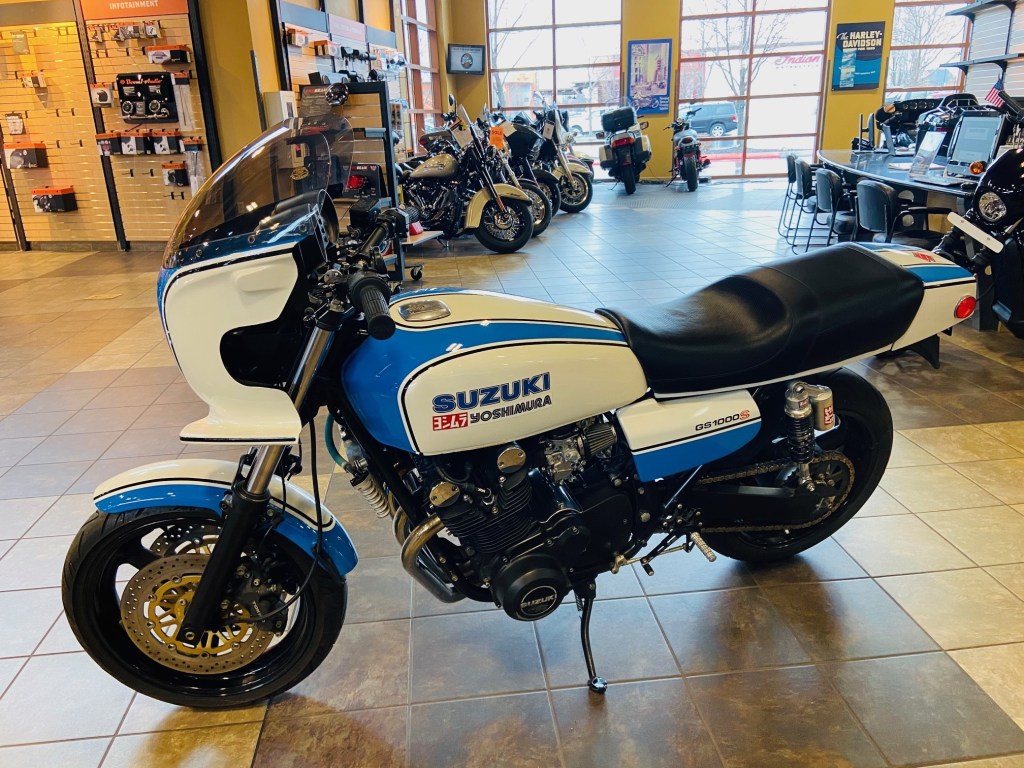
The only real issue, according to vintage bike forums, was a charging issue on early bikes. However, Motorcycle Classics reports this was rectified quickly by Suzuki, and there’s a modern replacement available regardless. The bike was available from the start with disc brakes front and rear, with the biggest change coming in 1980 when Suzuki revised the valvetrain. Today, these bikes can be regularly found for less than $5000.
BMW /6 and R90S
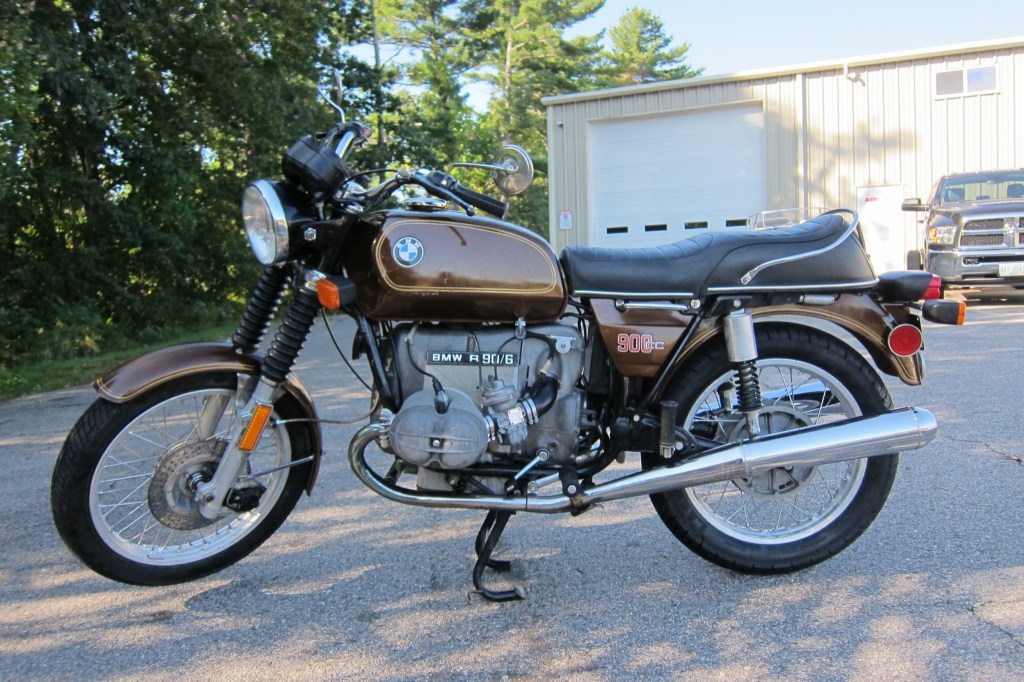
The ancestor of today’s RnineT, BMW’s 1974-1977 /6 bikes were an evolution of its post-WWII /5 bikes. The R60/6, R75/6, and R90/6 still used air-cooled opposed-twin engines, only the range’s displacement had increased. Now, instead of the 500cc R50/5, there was the 600cc R60/6. The other two /6 bikes’ names also indicated engine size: 750cc and 898cc, respectively. In addition, the bikes now came with a front disc brake.
Also, part of the /6 series was the 1974-1976 BMW R90S. This used a slightly modified version of the R90/6’s engine, but with larger carburetors, Motorcycle Classics reports. It also had front new styling, as well as a steering damper and wind fairing to increase comfort and stability on long rides. The R90S, as Cycle World explains, is the progenitor of BMW’s current line of well-regarded touring bikes, and was meant to shake the company’s staid image. And the bike still feels fairly modern today.
These bikes are also shaft-driven, rather than chain-driven like most bikes. Although the shaft-drive system is more difficult to repair if it fails because the shaft is enclosed, all most owners will have to do is change the oil.
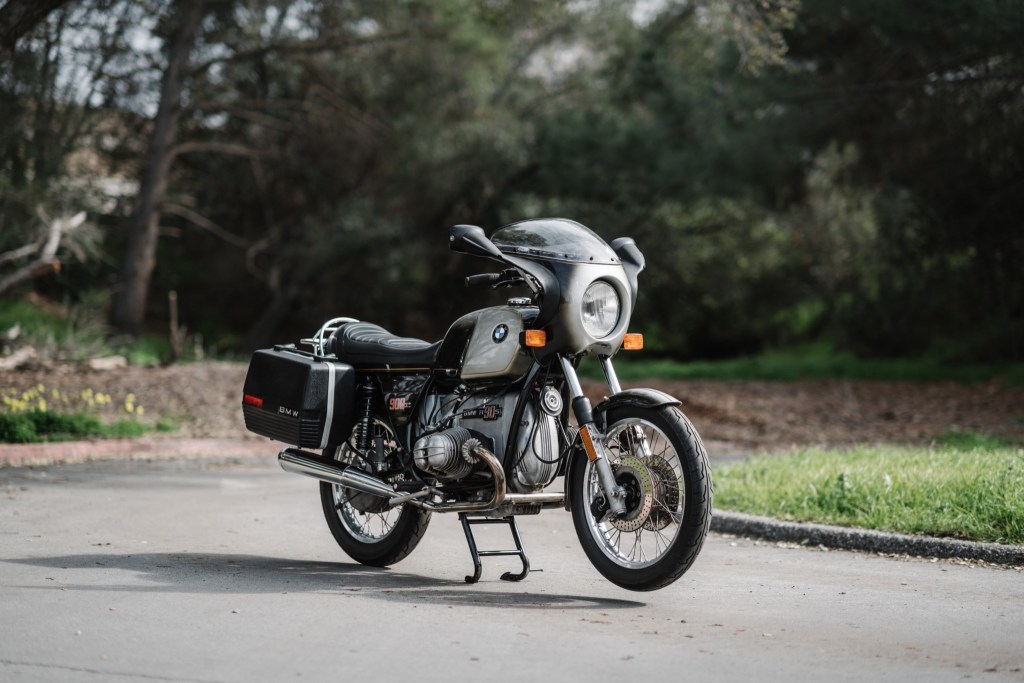
The /6 series as a whole is very reliable, apart from some teething issues on early ’74 bikes, BMW Motorcycle Tech reports. Vintage BMW motorcycle forum and ADVRider forum users praise these bikes for their usability both on short trips and long ones.
The BMW /6 Series is slightly more expensive than the Honda or Suzuki bikes. However, apart from the R90S, the /6 Series is less expensive than other classic BMW bikes. Bring a Trailer has sold several /6 models for $4000-$6000. The R90S, though, usually comes in closer to $8000-$10,000.
Follow more updates from MotorBiscuit on our Facebook page.

